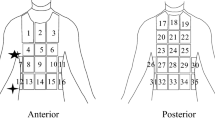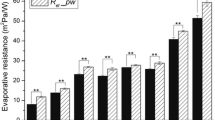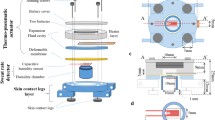Abstract
The local influence of three clothing materials i.e. silk, cotton and nylon, in (1) full or (2) partial skin contact or (3) at 3 mm from the skin, on sweat evaporation from the chest skin surface of human subjects was studied. The hygrometer-ventilated capsule method was used and sweating was induced at ambient thermoneutrality by a central heat load following lower-leg immersion in water at 43°C. The presence of clothing delayed the rise in capsule relative humidity (CRH) induced by heat loading. During the first 6 min of heating, CRH rose more steeply with clothing that was in full skin contact than with clothing that had partial or no contact. The rate of decrease in CRH from 1 min to 6 min after heating was not influenced by the presence of clothing or by the different degrees of skin contact. The subsequent return of CRH to the pre-heating level was delayed most by cotton, less by silk and least by nylon. For silk and nylon, partial contact with the skin prolonged the return to control conditions, as compared with full skin contact.
Similar content being viewed by others
Author information
Authors and Affiliations
Rights and permissions
About this article
Cite this article
Otomasu, K., Yamauchi, M., Ohwatari, N. et al. Analysis of sweat evaporation from clothing materials by the ventilated sweat capsule method. Eur J Appl Physiol 76, 1–7 (1997). https://doi.org/10.1007/s004210050205
Issue Date:
DOI: https://doi.org/10.1007/s004210050205




